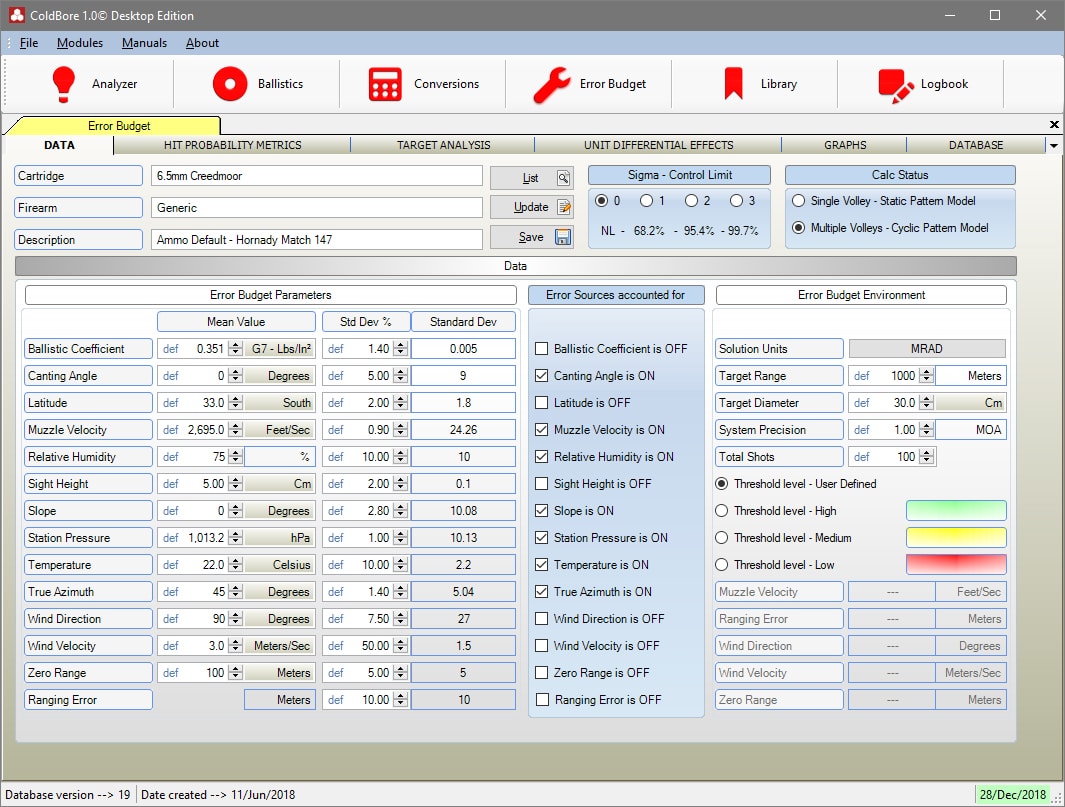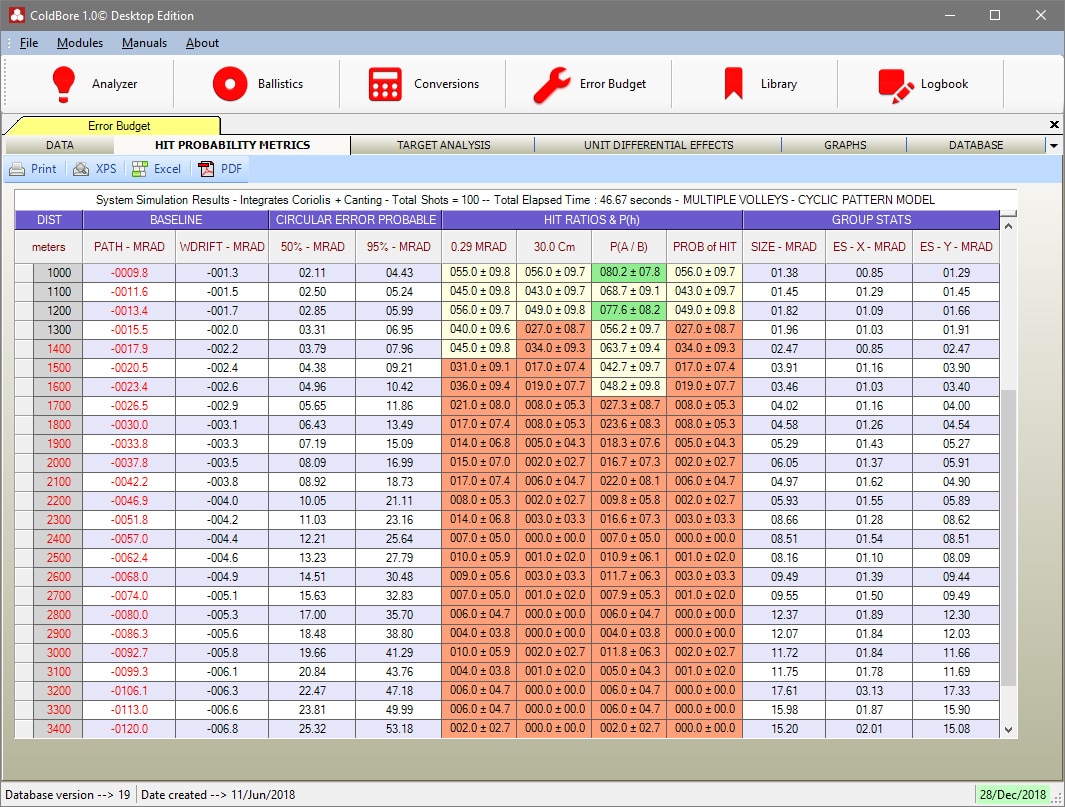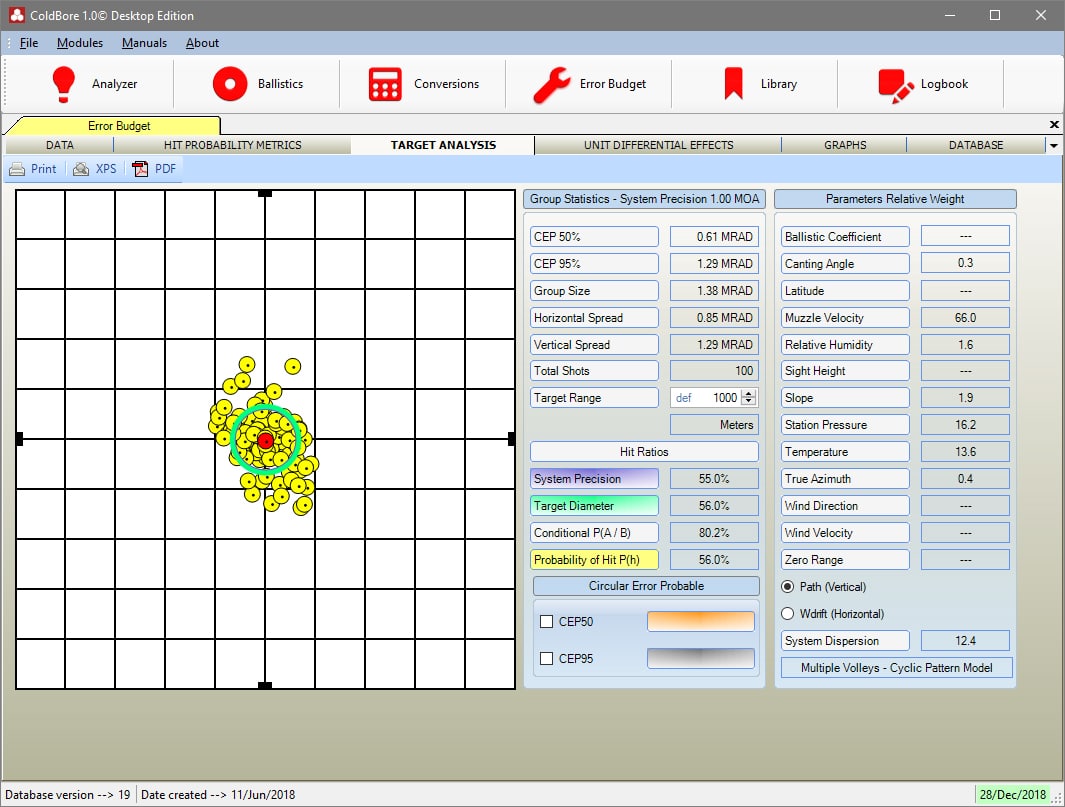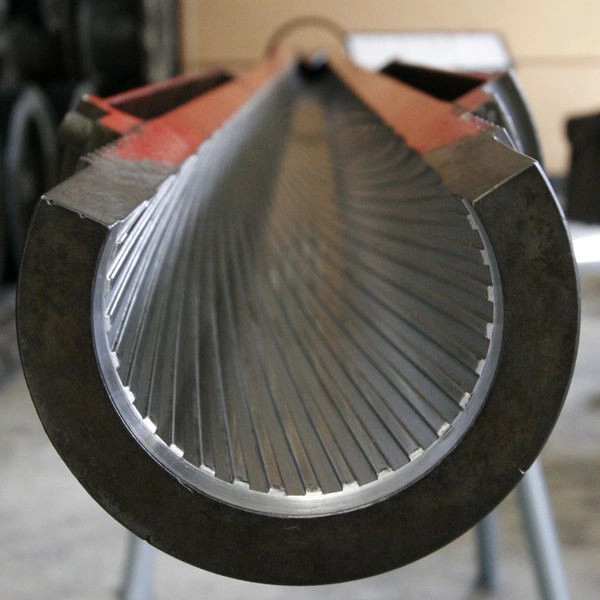A comment from a home-kill butcher/taxidermist I was having a chat too recently brought it home – he estimated that over 50% of the animals that were being brought into him to deal with had been shot in the rear half.
I would be interested to correlate this observation with distance shot at, but regardless, it would indicate that there is a lot of folks out there taking shots they shouldn’t be.
Often, I have folks purchasing rifle systems with the intent of stretching out their ‘effective hunting range’ – and I always make sure to have a decent conversation with them about expectation, reality, and ethics when it comes to long range hunting. I have seen animals wounded, badly, in situations where it simply shouldn’t have happened, by people that should have known better.
Wouldn’t it be useful to have a piece of software that would give us an impartial measure of our ability to shoot to distance? Well, it exists, in a couple of forms actually, and the results can often be sobering to both experienced and new shooters. This software is employed by a lot of folks already (i.e. military and police) as a method of impartially evaluating weapon systems and their deployment in situations where it’s important to be able to understand the big picture, before taking the shot.
At the moment I have two pieces of software that can be used to create a profile of hit probability, Applied Ballistics and Coldbore. This article is just a bit of an introduction to the systems and some of the concepts within, over the next couple of articles we are going to look into some specific factors that affect your hit probability, as well as run some specific examples to illustrate the point.
Allied Ballistics and WEZ
Some of you may already be familiar with Applied Ballistic (I would hope). Brian Litz and crew have been working hard to make calculating ballistic solutions more accurate, faster and easier for many, many, years and currently spearhead the developments in the ELR1 world as well.
Part of the Applied Ballistics Desktop suite is something called WEZ, Weapon Employment Zone Analysis.
This number crunching bit of software allows you to combine all the factors that can affect our probability of hit and targets of defined size and distance.
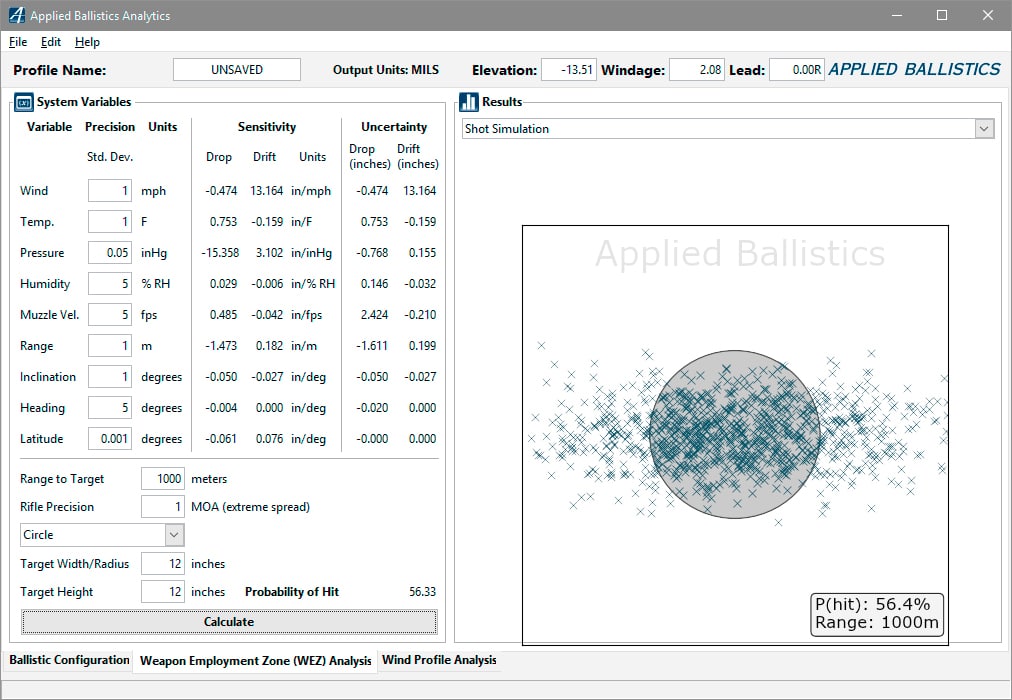
WEZ is somewhat the standard when it comes to understanding Probabilty of Hit in many military and LE applications.
Coldbore and Error Budget
The second piece of software I use, and my personal choice, is Coldbore.
Coldbore is the ‘old school’ of ballistic calculators – not as well known, potentially more powerful (in ways) and has a lot more inputs and control over the variables you can enter and test.
Coldbore is what I use to generate the data for the range cards I create for clients, as well as test out plenty of ‘what if’ scenarios.
Creating a shooting environment
What both of these systems hinge around, is entering in the firearm system data – ballistic coefficient, muzzle velocity, system accuracy, as well as the environmental data – wind, range, air pressure, and then adding in variables.
The reality is, we don’t shoot in a vacuum. We shoot in the real world, where not everything can be controlled or often, measured to the theoretic levels of accuracy that our ballistics software can calculate to. Hell, this is assuming that you are using a ballistics calculator in the first place!
It’s these variables that create the hit (or miss probability), that go way beyond the concept of your ‘one moa’ gun at 100 meters is a ‘one moa’ gun at 1000.
Sorry to break it to you, but things don’t work like that, at all.
Arguing with the Math
People like to assume things are linear. If I shoot a certain group size on paper at the range, the gun must just shoot the same, at any distance out until the projectile runs out of steam.
However, most of those people would also admit that wind blows a bullet around, most could also observe that estimating wind can be a bit of ‘a black art’ and, most would also understand that the wind isn’t a constant, as it increases and decreases constantly.
Now, also understand, that the velocity of the projectile isn’t a constant and varies from shot to shot.
Understand that the B.C. of your projectile also varies from shot to shot.
Rangefinders have variance in them.
So do Kestrels (at best) or your estimations of temperature, humidity and air pressure.
Was your scope mounted at exactly 5cm above bore, or was is closer to 4.8cm?
Cant. Slope. Azmuith.
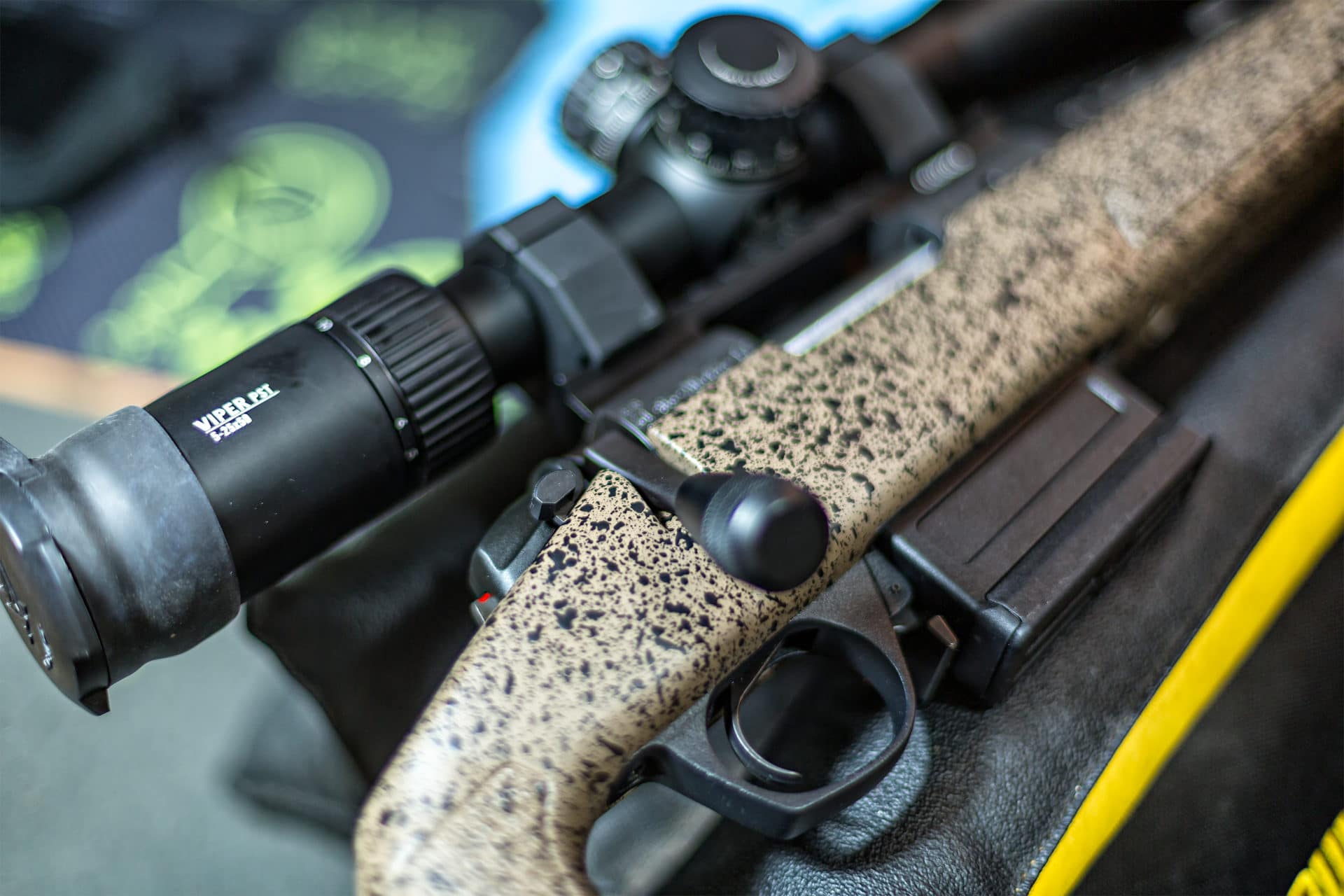 All these factors (many, admittedly in tiny, tiny amounts) all add up to a variance in shot to shot.
All these factors (many, admittedly in tiny, tiny amounts) all add up to a variance in shot to shot.
Some of these, like range, and wind, to a certain extent, can be minimised in variance after the first shot, but for that first trigger pull, there is a lot more going on within the ‘system’ what just the size of the hole in the paper when you zeroed your rifle.
The further you go stretch out, the more effect these system and environmental factors play into your result.
No matter what you do, you will miss
You can’t deny physics. So, it’s important to understand, that at certain distances, no matter what you do, whether you nail the fundamentals, break that shot perfectly, follow through like a pro, you may still miss due to the firearm systems (this includes the environment) inherent error at distance.
Ever been shooting in a field shoot at a target and the rounds just seem to slip by the left, then the right, then the right, then a hit, then left and so on? That is what we are talking about, and that is what we are looking to quantify and understand, and potentially, just potentially, work to mitigate a bit.
extreme long range ↩

